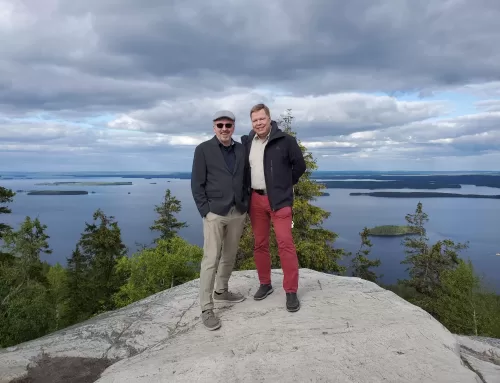 Forests have been around a lot longer than humans. Thick and mighty, they represent the powerful unknown while sheltering the wild and inspiring the stuff of fairy tales. Though resilient in some aspects, many forests are vulnerable to human and environmental stressors, and they are the subject of much research considering conservation and sustainable resource production. In an effort to conserve the green spaces of the world, increasing resiliency is a huge contributing factor in that it is less of a direct intervention and more of an effort to strengthen the natural mechanisms the forests use to heal themselves. Increasing forest resiliency for the future identifies five steps for increasing resiliency are below:
Forests have been around a lot longer than humans. Thick and mighty, they represent the powerful unknown while sheltering the wild and inspiring the stuff of fairy tales. Though resilient in some aspects, many forests are vulnerable to human and environmental stressors, and they are the subject of much research considering conservation and sustainable resource production. In an effort to conserve the green spaces of the world, increasing resiliency is a huge contributing factor in that it is less of a direct intervention and more of an effort to strengthen the natural mechanisms the forests use to heal themselves. Increasing forest resiliency for the future identifies five steps for increasing resiliency are below:
- The first step to increasing resiliency in forests is assessing the resilience of the forest in question by addressing a few key areas and identifying resilient and vulnerable aspects of the forest. Connectivity to other resilient forested areas is important, so we want to know if estate-planning in these area includes a plan that takes forest conservation into account.
- Second, we want to maintain connectivity to larger resilient bodies of the forest, that is to say we want to make sure we aren’t disrupting the natural spread of the ecosystem.
- Thirdly, we want to look at the prevalence of natural forest stressors such as soil compaction and erosion, invasive plants, insects, and deer population.
- Fourth, we want to look at diversity of native species (especially those well adapted to future conditions).
- Fifth, we want to look at whether there are areas of crowded tree stems, whether there are 5 or more large snags per acre, whether there are 5 or more large logs per acre, and finally whether water resources have forested buffers. And finally, we want to look at how accommodating the area is to threatened, endangered, or threatened species.(CITE)
Once the forest stressor evaluation is complete, interventions can be employed to decrease areas of low resilience and to increase future forest resilience based on vulnerability specific to the forest in question. Legal help will usually be the first step in establishing resilience. By establishing a legal document with clear distinctions about what should be done with the land in question in the future, you can protect it from vulnerability to development or intervention. Furthermore, by maintaining connectivity in the forests by backing conservation-based zoning which minimizes fragmentation, we can greatly increase resiliency by minimizing the impacts of segmentation (this will require cooperation between municipal offices and private land owners).
Cooperation is key here because of the sheer size of the forests, and it is likely going to be the most difficult aspect of increasing forest resiliency. Controlling invasive plants in your back yard isn’t going to do any good if they are thriving on the other side of the fence, so getting people to act together to implement good practices in forestry may well be an area worth focusing on. — Will Williamson



